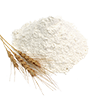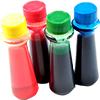Our Disclaimer (The serious stuff)
By using our free meal planner (and the rest of spoonacular.com) you have to agree that you and only you are responsible for anything that happens to you because of something you have read on this site or have bought/cooked/eaten because of this site. After all, the only person who controls what you put in your mouth is you, right?
Spoonacular is a recipe search engine that sources recipes from across the web. We do our best to find recipes suitable for many diets — whether vegetarian, vegan, gluten free, dairy free, etc. — but we cannot guarantee that a recipe's ingredients are safe for your diet. Always read ingredient lists from the original source (follow the link from the "Instructions" field) in case an ingredient has been incorrectly extracted from the original source or has been labeled incorrectly in any way. Moreover, it is important that you always read the labels on every product you buy to see if the product could cause an allergic reaction or if it conflicts with your personal or religious beliefs. If you are still not sure after reading the label, contact the manufacturer.
We also attempt to estimate the cost and calculate the nutritional information for the recipes found on our site. Again, we cannot guarantee the accuracy of this information. Additionally, our nutrition visualizer that suggests that you limit sodium, sugar, etc., and get enough protein, vitamins, and minerals is not intended as medical advice. Similarly, our health tips are based on articles we have read from various sources across the web, and are not based on any medical training. The team behind spoonacular does not possess any medical qualifications and the information may be found to be incorrect or out of date based on future research. If you need help planning your diet or determining which foods (and recipes) are safe for you, contact a registered dietitian, allergist, or another medical professional.
Spoonacular is not responsible for any adverse effects or damages that occur because of your use of the website or any information it provides (e.g. after cooking/consuming a recipe on spoonacular.com or on any of the sites we link to, after reading information from articles or shared via social media, etc.)
×
Red Velvet V Cake

vegetarian

$2.24 per serving

1 likes

Ready in 45 minutes
8
valentine's day,vegetarian,lacto ovo vegetarian
dessert

Spoonacular Score: 1% 
My notes:

Red Velvet V Cake might be just the dessert you are searching for. For $2.24 per serving, this recipe covers 13% of your daily requirements of vitamins and minerals. This recipe serves 8. One serving contains 1027 calories, 13g of protein, and 51g of fat. A mixture of icing sugar, baking soda, mascarpone cheese, and a handful of other ingredients are all it takes to make this recipe so tasty. It can be enjoyed any time, but it is especially good for valentin day. This recipe is liked by 1 foodies and cooks. It is a good option if you're following a lacto ovo vegetarian diet. It is brought to you by Foodista. From preparation to the plate, this recipe takes approximately 45 minutes. With a spoonacular score of 28%, this dish is not so super. If you like this recipe, take a look at these similar recipes: Red Velvet Sheet Cake with Classic Red Velvet Frosting, Red Velvet Tres Leches Cake {Red Velvet Week}, and Red Velvet Black and White Cookies {Red Velvet Week/Saturdays with Rachael Ray}.
Cream Sherry, Port Wine, and Moscato d'Asti are great choices for Dessert. A common wine pairing rule is to make sure your wine is sweeter than your food. Delicate desserts go well with Moscato d'Asti, nutty desserts with cream sherry, and caramel or chocolate desserts pair well with port. The NV Johnson Estate Cream Sherry with a 5 out of 5 star rating seems like a good match. It costs about 19 dollars per bottle.
NV Johnson Estate Cream Sherry
 Very aromatic with notes of hazelnut, vanilla, and a touch of oak followed by sweet raisins and a touch of yeast. Clean lasting finish. Good now but will reward those allow it to age"". A favorite pre-prandial beverage. Consider it with nuts before dinner as an aperitif, or after dinner with dessert, especially chocolates and fruit-based desserts. Also wonderful on cold afternoons, served with biscotti to dip in ""Italian-style"". "
Very aromatic with notes of hazelnut, vanilla, and a touch of oak followed by sweet raisins and a touch of yeast. Clean lasting finish. Good now but will reward those allow it to age"". A favorite pre-prandial beverage. Consider it with nuts before dinner as an aperitif, or after dinner with dessert, especially chocolates and fruit-based desserts. Also wonderful on cold afternoons, served with biscotti to dip in ""Italian-style"". "
» Get this wine on Amazon.com
Ingredients
312.5 g
2.5 cups
all purpose flour
0.5 tsps
0.5 tsps
baking soda
1 Tbsp
1 Tbsp
cider vinegar
175 grams
6.17 oz
cream cheese
1.5 Tbsps
1.5 Tbsps
red liquid food coloring
500 grams
1.1 lb
mascarpone cheese
120 g
1 cup
fresh raspberries
340 grams
11.99 oz
raspberry jam
340 grams
11.99 oz
raspberry jam
1 Tbsp
1 Tbsp
unsalted butter
0.5 tsps
0.5 tsps
vanilla extract
238 ml
1 cup
sweetened whipping cream
312.5 g
2.5 cups
all purpose flour
0.5 tsps
0.5 tsps
baking soda
1 Tbsp
1 Tbsp
cider vinegar
175 grams
6.17 oz
cream cheese
1.5 Tbsps
1.5 Tbsps
red liquid food coloring
500 grams
1.1 lb
mascarpone cheese
120 g
1 cup
fresh raspberries
340 grams
11.99 oz
raspberry jam
340 grams
11.99 oz
raspberry jam
1 Tbsp
1 Tbsp
unsalted butter
0.5 tsps
0.5 tsps
vanilla extract
238 ml
1 cup
sweetened whipping cream
Equipment
Instructions
- Cake:
- Preheat oven to 350 F degrees. Grease and lightly flour 2 or 3 round 9" spring cake pans, or bake the layers one at a time.
- Sift flour and salt together, set aside.
- In the bowl of a stand mixer, combine the butter and sugar. Mix until light and fluffy. Add the eggs one at a time. Mix well after each addition. Add the flour mixture to the bowl alternately with the buttermilk, beginning and ending with flour mixture. Blend in vanilla.
- In a small bowl, mix the 1 1/2 tbsp red food coloring and 1 tbsp cocoa powder until a paste forms. Add to the sugar and butter mixture. Mix well.
- In a small bowl or condiment cup, stir together the baking soda and cider vinegar. This will foam and should be put into the batter immediately after well mixed. After adding the foam mixture, blend on medium-high speed until batter is consistent.
- Spoon batter evenly into pans - batter will be very thick! Level top of batter with an offset spatula.
- Bake for 25-30 minutes, or until cake springs back when pressed in the center.
- Remove and let rest within the pans on wire rack for about 10 minutes and afterwards turn out on wire racks and cool completely.
- Cream Cheese Frosting:
- In a mixing bowl whip the sweetened whipping cream and vanilla until light and fluffy.
- In a large mixing bowl, beat the cream cheese and vanilla together with the mixer on low, gradually pouring in the confectioners sugar until smooth. Add gradually the mascarpone cheese and beat again until blended completely. Increase the speed to high and beat until light and fluffy. Gently fold the whipped cream. If mixture is too thick, add a little cream to loosen it. If it is too thin, add additional powdered sugar or put in the refrigerator to firm up.
- If carving cake and coating with crumbs, be sure to put the crumbs on when the icing is fresh and still sticky.
- Assemble:
- For the heart template, trace the bottom of a cake pan on wax paper, cut out the 9" circle. Fold it in half and cut into a heart shape. Lay the paper heart on the cake and trim it down if it doesn't comfortably fit inside the cake's circumference.
- Red velvet cake is dense, so it carves easily with a serrated knife.
- To make the crumb coating, crumble the cake scraps with your fingers. Discard any crusty, hard or discolored crumbs. You only want the best and softest crumbs for coating.
- Place the first heart shaped layer onto the serving plate, spread 1/3 part of the raspberry jam first and afterwards spread a thick layer of cream cheese and sprinkle 1/2 part of the frozen raspberries. Repeat with the second layer. Place the last layer, spread the last 1/3 part of jam and coat the cake all over with the rest of the Cream Cheese frosting.
- My best way to apply the crumbs is to place the frosted cake onto the serving plate, lined with wax paper strips. Crumb the top of the cake first. Crumb the wax paper strips and gently press the paper strips with the crumbs to the sides of the cake. Remove the wax paper and remove the excess crumbs or add some more where necessary. Do a little clean-up around the cake edges with a damp paper towel.
- Chill for at least 2 hours.
- And most delicious Valentine is ready.
Read the detailed instructions on Foodista.com – The Cooking Encyclopedia Everyone Can Edit
Price Breakdown
Cost per Serving: $2.75
Ingredient
2.5 cups all purpose flour
1 cup buttermilk
1 tablespoon cider vinegar
1 tablespoon cocoa powder
175 grams cream cheese
2 eggs
1.5 tablespoons red liquid food coloring
1 cup icing sugar
500 grams mascarpone cheese
1 cup fresh raspberries
340 grams raspberry jam
340 grams raspberry jam
2 cups sugar
1 tablespoon unsalted butter
½ teaspoons vanilla extract
1 cup sweetened whipping cream
Price$0.42
$0.49
$0.06
$0.08
$1.81
$0.48
$3.53
$0.39
$2.50
$1.80
$4.24
$4.14
$0.55
$0.12
$0.15
$1.29
$22.04
Nutritional Information
Quickview
1145 Calories
13g Protein
50g Total Fat
160g Carbs
3% Health Score
Limit These
Calories
1145k
Fat
50g
Saturated Fat
30g
Carbohydrates
160g
Sugar
109g
Cholesterol
166mg
Sodium
546mg
Get Enough Of These
Protein
13g
Vitamin A
1763IU
Selenium
22µg
Vitamin B2
0.49mg
Vitamin B1
0.36mg
Folate
94µg
Manganese
0.44mg
Calcium
197mg
Phosphorus
155mg
Iron
2mg
Vitamin C
11mg
Fiber
3g
Vitamin B3
2mg
Copper
0.21mg
Vitamin D
1µg
Potassium
255mg
Vitamin B5
0.72mg
Magnesium
26mg
Vitamin E
0.9mg
Zinc
0.88mg
Vitamin B12
0.33µg
Vitamin B6
0.1mg
Vitamin K
2µg
covered percent of daily need
Related Recipes




 Very aromatic with notes of hazelnut, vanilla, and a touch of oak followed by sweet raisins and a touch of yeast. Clean lasting finish. Good now but will reward those allow it to age"". A favorite pre-prandial beverage. Consider it with nuts before dinner as an aperitif, or after dinner with dessert, especially chocolates and fruit-based desserts. Also wonderful on cold afternoons, served with biscotti to dip in ""Italian-style"". "
Very aromatic with notes of hazelnut, vanilla, and a touch of oak followed by sweet raisins and a touch of yeast. Clean lasting finish. Good now but will reward those allow it to age"". A favorite pre-prandial beverage. Consider it with nuts before dinner as an aperitif, or after dinner with dessert, especially chocolates and fruit-based desserts. Also wonderful on cold afternoons, served with biscotti to dip in ""Italian-style"". " 




















































